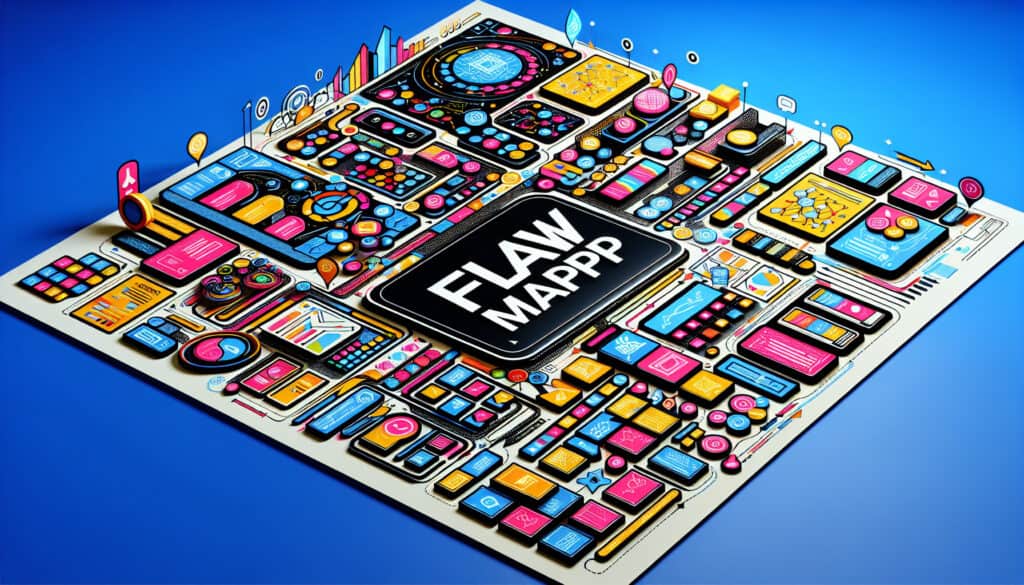To create visual sitemaps and user flows for websites and applications.
- Metodologie: Clienti e marketing, Economia, Progettazione del prodotto
Flowmapp

Flowmapp
- Processo di progettazione, Pensiero progettuale, Architettura dell'informazione, Gestione del progetto, Esperienza utente (UX), Interfaccia utente (UI), Test dell'utente, Progettazione incentrata sull'utente
Obiettivo:
Come si usa:
- An online tool that helps designers and project managers plan the structure and user journeys of a digital product. It allows for the creation of interactive sitemaps and user flow diagrams that can be shared and collaborated on with a team.
Professionisti
- Provides a clear and visual way to plan a website or application; Facilitates collaboration and communication within a team.
Contro
- The free version has limitations; May not be suitable for all types of projects.
Categorie:
- Progettazione del prodotto, Gestione del progetto
Ideale per:
- Planning the architettura dell'informazione and user flows of a new website or application.
Flowmapp is particularly beneficial in various stages of product development, especially during the research and planning phases. Its application spans industries such as e-commerce, SaaS, mobile applications, and digital marketing, where understanding user interaction is fundamental to success. By utilizing interactive sitemaps and user flow diagrams, project teams can visually represent the structure of a digital product, enabling clearer communication with stakeholders and ensuring that everyone shares a common vision. Collaboration features allow team members—ranging from designers and developers to product managers and marketing strategists—to contribute their expertise from different vantage points, enhancing the quality of the final product. This methodology is well-suited for Agile environments, where iterative testing and rapid feedback loops are conducive to refining product concepts. Workshops and brainstorming sessions can be significantly improved through such a tool, as it provides a dynamic medium for discussions, helping teams pivot and adapt designs based on collective input. Flowmapp serves to align user experience objectives with business goals, ensuring that the final output not only meets usability standards but also drives key performance indicators. Understanding information architecture at this granular level can lead to more intuitive interfaces, lower abandonment rates, and improved user satisfaction. Ultimately, the strategic application of Flowmapp can amplify the effectiveness of design processes across digital projects.
Fasi chiave di questa metodologia
- Define the project scope and objectives to establish the framework for design.
- Identify user personas to understand target audience needs and behaviors.
- Create a hierarchical sitemap to outline the content structure of the website or application.
- Develop user flow diagrams to visualize paths users will take through the product.
- Iterate on the sitemap and user flows based on stakeholder feedback and design reviews.
- Create annotated wireframes to detail the functional layout for each page or screen.
- Conduct usability testing on wireframes to refine user interactions and layout. <liCollaborate with development teams to ensure design feasibility and alignment with technical constraints.
Suggerimenti per i professionisti
- Involve stakeholders early in the flow mapping process to ensure all perspectives are considered and integrated into the design.
- Utilize user persone and user stories during the planning phase to better align the sitemap with user needs and expectations.
- Regularly iterate on the user flows based on feedback; testing prototypes can reveal overlooked pathways and enhance user experience.
Leggere e confrontare diverse metodologie, raccomandiamo il
> Ampio archivio di metodologie <
insieme ad altre 400 metodologie.
I vostri commenti su questa metodologia o ulteriori informazioni sono benvenuti su sezione commenti qui sotto ↓ , così come tutte le idee o i link relativi all'ingegneria.
Contesto storico
1986
(se la data non è nota o non è rilevante, ad esempio "meccanica dei fluidi", viene fornita una stima approssimativa della sua notevole comparsa)

Post correlati
Questionari sul disagio muscoloscheletrico
Test multivariati (MVT)
Analisi di regressione multipla
Sistemi di cattura del movimento
Metodo MoSCoW
Test mediano dell'umore